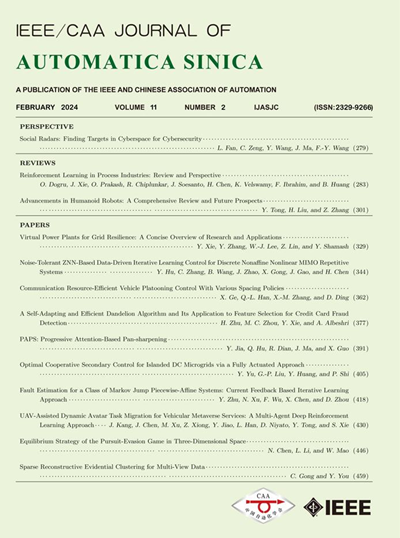Knowledge Classification-Assisted Evolutionary Multitasking for Two-Task Multiobjective Optimization Problems
IF 19.2
1区 计算机科学
Q1 AUTOMATION & CONTROL SYSTEMS
引用次数: 0
Abstract
To realize Industry 5.0, manufacturers face various optimization problems that seldom appear in isolation. Evolutionary MultiTasking (EMT) is an effective method to solve multiple related problems by extracting and utilizing common knowledge. Knowledge transfer is the key to the effectiveness of EMT. Existing EMT methods mainly focus on designing effective intertask learning methods and ignore the fact that provided knowledge's appropriateness also has a significant effect on EMT's performance. There is plentiful knowledge in assistant tasks, and knowledge transfer may not work well and even lead to a negative effect if useless knowledge is selected to guide target tasks. EMT is thus confronted with a challenge to find appropriate knowledge. This work proposes an efficient knowledge classification-assisted EMT framework to identify and select valuable knowledge from assistant tasks. During the evolution process, better-performing candidates are supposed to have advantages in exploitation. Therefore, assistant individuals that are similar to better-performing target individuals are used to provide positive knowledge. Specifically, the target sub-population is divided into different levels and then a classifier is trained to divide assistant sub-population. Considering that target and assistant sub-populations have different characteristics, we use domain adaptation to reduce their distribution discrepancies. In this way, the trained classifier can classify assistant individuals more accurately, and truly useful knowledge can be selected for target tasks. The superior performance of our proposed framework over state-of-the-art algorithms is verified via a series of benchmark problems.双任务多目标优化问题的知识分类辅助进化多任务
为了实现工业5.0,制造商面临着各种优化问题,这些问题很少孤立出现。进化多任务(EMT)是一种通过提取和利用共同知识来解决多个相关问题的有效方法。知识转移是影响急诊医疗效果的关键。现有的EMT方法主要侧重于设计有效的任务间学习方法,而忽略了知识的适当性对EMT绩效的影响。辅助任务中存在丰富的知识,如果选择无用的知识来指导目标任务,可能会导致知识转移不顺利,甚至产生负面影响。因此,EMT面临着寻找合适知识的挑战。本文提出了一个有效的知识分类辅助EMT框架,从辅助任务中识别和选择有价值的知识。在进化过程中,表现较好的候选人在开发中具有优势。因此,与表现较好的目标个体相似的辅助个体被用来提供积极的知识。具体来说,将目标子种群划分为不同的层次,然后训练分类器来划分辅助子种群。考虑到目标亚种群和辅助亚种群具有不同的特征,我们使用域适应来减小它们的分布差异。这样,经过训练的分类器可以更准确地对辅助个体进行分类,并为目标任务选择真正有用的知识。通过一系列基准问题验证了我们提出的框架优于最先进算法的性能。
本文章由计算机程序翻译,如有差异,请以英文原文为准。
求助全文
约1分钟内获得全文
求助全文
来源期刊

Ieee-Caa Journal of Automatica Sinica
Engineering-Control and Systems Engineering
CiteScore
23.50
自引率
11.00%
发文量
880
期刊介绍:
The IEEE/CAA Journal of Automatica Sinica is a reputable journal that publishes high-quality papers in English on original theoretical/experimental research and development in the field of automation. The journal covers a wide range of topics including automatic control, artificial intelligence and intelligent control, systems theory and engineering, pattern recognition and intelligent systems, automation engineering and applications, information processing and information systems, network-based automation, robotics, sensing and measurement, and navigation, guidance, and control.
Additionally, the journal is abstracted/indexed in several prominent databases including SCIE (Science Citation Index Expanded), EI (Engineering Index), Inspec, Scopus, SCImago, DBLP, CNKI (China National Knowledge Infrastructure), CSCD (Chinese Science Citation Database), and IEEE Xplore.
 求助内容:
求助内容: 应助结果提醒方式:
应助结果提醒方式:


